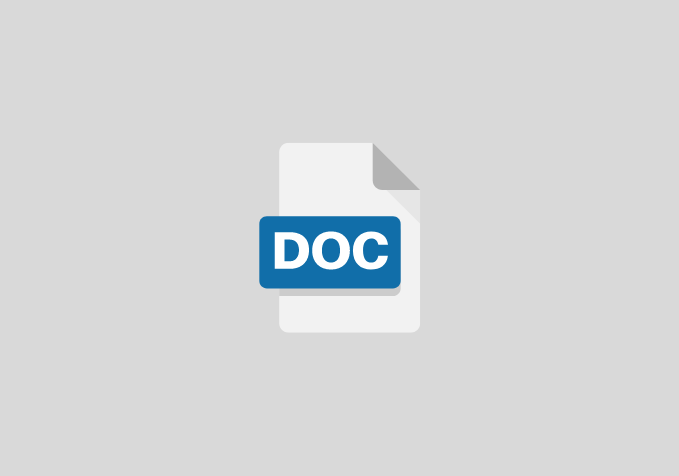Linguistic Features of Academic Language
Chapter One
OBJECTIVES OF THE STUDY:
This study is aimed at investigating the linguistic features of academic language. It is guided by the following sub-objectives;
- To provide a deep analysis of academic language from a linguistic point of view.
- To disclose the function and general peculiarities of the academic language.
- Draws on literary and linguistic theory for analyzing academic text.
CHAPTER TWO
REVIEW OF RELEVANT LITERATURE
Language, whether verbal, written or non-verbal plays a vital role in all levels of academic teaching. According to Sapir (1921:8), Language is a purely human and non-instinctive method of communicating ideas, emotions and desires by means of voluntarily produced symbols. Since academic language involves transmitting or conveying ideas, thoughts or messages, it can be deduced that education is heavily dependent on the medium of communication (language). As language plays a key role in education, so is language of paramount importance in education.
Today the art of teaching can be done in numerous ways as a result of advances in technology. In education, the choice of language varieties influences how students or pupils understand and it ultimately affects the academic achievement of these students. Okpaleke (1992:21) in Ezejideaku & Ugwu (2010) opines that the language of education must be informative, instructive, distinctive, refreshing and firm. Academic language greatly affects the way students perceive or respond to a subject. The language of a teacher on any subject should be positive as it will convey a belief of simplicity to the students. The teacher’s choice of language to positively influence the students of the audience is very essential.
According to Leech (1966:25) in Ezejideaku & Ugwu (2010), the four characteristics of successful education are: attention value, readability, and memorability. By attention value, this means that it must provoke the consumer’s attention and curiosity. Readability of education means that the message must be easily grasped and assimilated. Memorability involves the features in the lesson that make it memorable such as abbreviated keywords. From the foregoing, it is clear that the form of language used in the learning environment is of utmost importance but there still remains numerous linguistic features which the teacher has to choose from. In order to improve efficiency in the classroom, this study aims at exploring linguistics features in order to proffer the most suitable for use in academic languages.
CHAPTER THREE
METHODOLOGY OF THE RESEARCH
INTRODUCTION
This chapter reviews the methodology to be utilized in the study. It includes research methodology, data collection, and sample of the study, reliability and validity and procedure of data analysis.
METHODOLOGY
The methodology conducted in this study in which qualitative approach was adopted because it seems most satisfactory in realizing the general aims of linguistic features of academic language which associated mainly with modern linguistic studies and offers an appropriate line of inquiry to follow because the other approach is limited, also a perfect way for exploring the linguistic features of academic language by covering the depth of meaning, as well as to understand the social factors related to it such as culture, gender and religion.
RELIABILITY AND VALIDITY
According to Silverman the reliability and validity of qualitative analysis depends more on the quality of the analysis than on the size of the sample. (Silverman, 2008) Throughout any part of defined methodology there is always a risk of bias and error. To minimize the risk of problems during the analysis phase there are certain factors to consider. When conducting qualitative study, it is important that the data collection is well prepared to minimize the risk of errors and to increase the quality. So its main aim is to describe and explain the patterns of usage which are found in academic language whether, they are prestigious or not.
References
- Pearson C.J. et al (2003). Human Communication. New York: Mc- Graw-Hill.
- Peterson, Richmond: Definition of Ambiguity. Internet.
- Saeed I. J.(2003). Semantics.2nd Ed. UK: Blackwell Publishing Ltd. Solan, M. and Tiersma, M. (2005) Speaking of Crime: The Language of CriminalJustice. Chingo: University of Chicago Press.
- Stubbs .M. (1985). Discourse Analysis. The Sociolinguistic Analysis of NaturalLanguage. UK: Blackwell publishing.
- Thomas, J. (1985). Language of power: Towards a Dynamic Pragmatic. Journal ofPragmatic: 9:765-85.
- Ullmann, S.(1977). Semantics: An Introduction totheScienceof Meaning.Oxford: Basil Balchwell.
- Verschueren, J. (2002). UnderstandingPragmatic: London. Hodder Arnold.
- Whetmore, E. J (ed) (1985).MedianencaCalifornia: IdadsworthPublishing Company (Third Edition).
- Yule. G. (1996). The study of Language. 2nd Ed. UK. Cambridge University Press.


